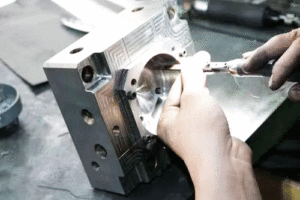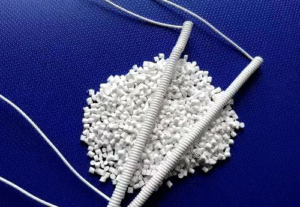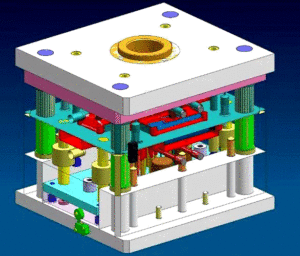
Polishing Treatment for Plastic Molds
Polishing Treatment for Plastic Molds With the widespread application of plastic products, such as daily-use items and beverage packaging containers, there is often a requirement
The plastic raw material processing process mainly involves melting the pellets, flowing, and then cooling to become the final product. It is a process of heating and then cooling the plastic, as well as transforming the plastic from pellets into various shapes. The following will explain the processing process from different stages.

The heater device gradually melts the raw material particles into a fluid state for flow. The temperature is mainly adjusted according to the different materials, and increasing the temperature will accelerate material flow, potentially improving efficiency but not necessarily guaranteeing yield. A suitable balance must be achieved.
Furthermore, achieving good results with PP, considering its tendency for thermal degradation, is best to ensure smooth material flow to the mold to avoid issues like insufficient filling or backflow. Backflow indicates that the material is flowing faster than the production rate, ultimately leading to an increase in average flow efficiency, which can result in an increase in MFR (Melt Flow Rate). This can be a usable processing method, but it may also lead to a non-normal distribution of MFR, potentially causing increased instability and a higher defect rate.
However, as PP products are generally not highly precise in terms of dimensions due to their application, these effects are usually not significant.
The majority of PP processing relies on the screw to drive flow, so the design of the screw has a significant impact. The diameter affects the output, the compression ratio influences the pressure and also impacts the output and final product quality. This includes various materials (colorants, additives, and modifiers) for blending.
Material flow primarily relies on the heater, but material tumbling and friction can generate frictional heat to accelerate fluidity. Therefore, a smaller screw compression ratio drives less flow, and the speed must be increased, resulting in more frictional heat than a screw with a larger compression ratio.
So, it is often said that plastic processing has no master, and those who earnestly learn about the machine’s performance are the masters. Heating the material involves not only the heater but also the frictional heat and residence time.
Therefore, this is a practical issue, and experience helps in solving production problems and improving efficiency. If a screw requires a particularly good blending effect, sometimes a two-stage screw with different designs or a twin-screw is designed with different screw forms in each section to achieve various blending effects.
Plastic reshaping relies on molds or dies. Injection molded products are three-dimensional, and molds are relatively complex, requiring consideration of shrinkage issues. Others are flat, strip-like, needle-like continuous product molds. If they have special shapes, they are classified as irregular and require immediate cooling and shaping.
The design of plastic machinery is mostly like an injection syringe, where the screw-driven extrusion force will create enormous pressure at a small exit, increasing production efficiency. When the mold is designed to be flat, it is important to ensure even distribution of the material across the entire surface. The design of the hanger mold head is crucial in achieving stable material supply, emphasizing the increase in the fish gill-type pump’s stability for material supply.

For injection molds, apart from the runner and gate for material injection, there are also cooling channels designed for material cooling.
For extrusion molding, cooling is achieved using cooling water channels inside rollers. Additionally, there are methods like air knives, where cooling water is directly sprayed onto the blown film, and hollow blowing for cooling.
Post-processing stretching of finished products can enhance their properties.
For example, when using front and rear rollers with different speeds for strapping, it causes stretching effects. The part of the finished product that undergoes stretching exhibits increased tensile strength and is less prone to tearing. However, it is easily torn in the transverse direction.
Molecular weight distribution also affects the stretching effects during high-speed production. All extruded products, including fibers, undergo varying degrees of stretching. Vacuum and pressure forming can also be considered another form of stretching.
Every material has issues related to shrinkage, which is caused by thermal expansion and contraction as well as internal stress during crystallization.
Generally, thermal expansion and contraction are easier to overcome. It can be managed during processing by extending the cooling time and maintaining pressure. Crystalline materials tend to have greater shrinkage differences than non-crystalline materials.
For example, in the case of PP, the shrinkage is around 0.016 (1.6%), while ABS is only around 0.004 (0.4%), indicating a significant difference. This aspect needs to be addressed in the mold design or by adding agents that reduce shrinkage. For extruding sheets, LDPE is often added to improve the problem of necking.

Polishing Treatment for Plastic Molds With the widespread application of plastic products, such as daily-use items and beverage packaging containers, there is often a requirement

Injection Molding Techniques for TPE and TPR Injection Molding Techniques for TPE and TPR 1. Dry the TPE and TPR material before injection molding It

Winter Maintenance Measures for Injection Molding Machines As winter approaches and temperatures gradually drop, a cold chill envelops the earth. While ensuring personal warmth, it

Assessment Regulations for Mold Trial Exceeding 3 Times Assessment Regulations for Mold Trial 1. Purpose The purpose of this regulation is to standardize the work of